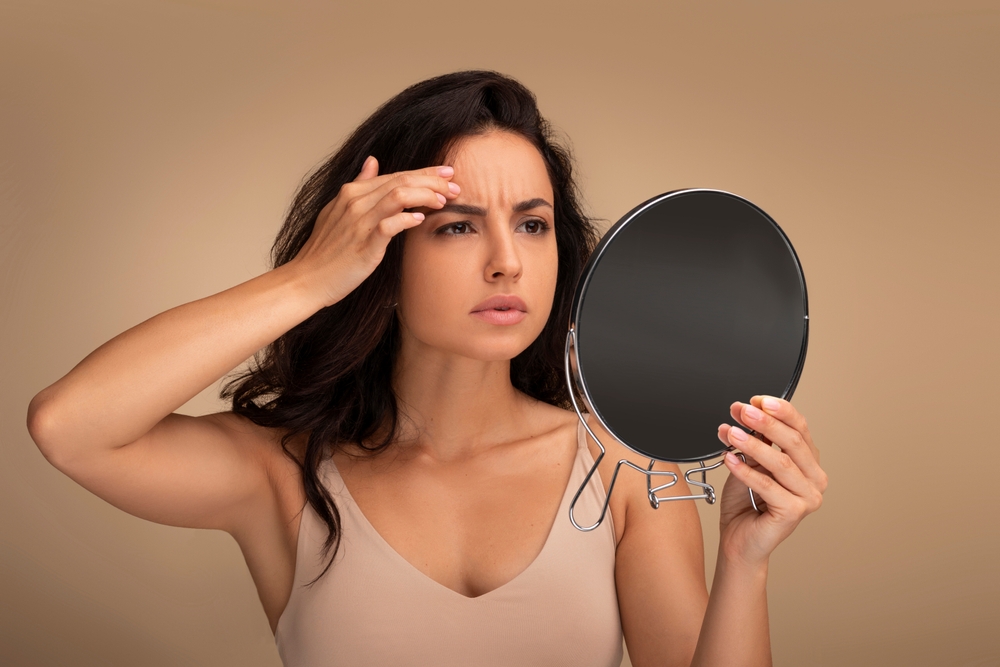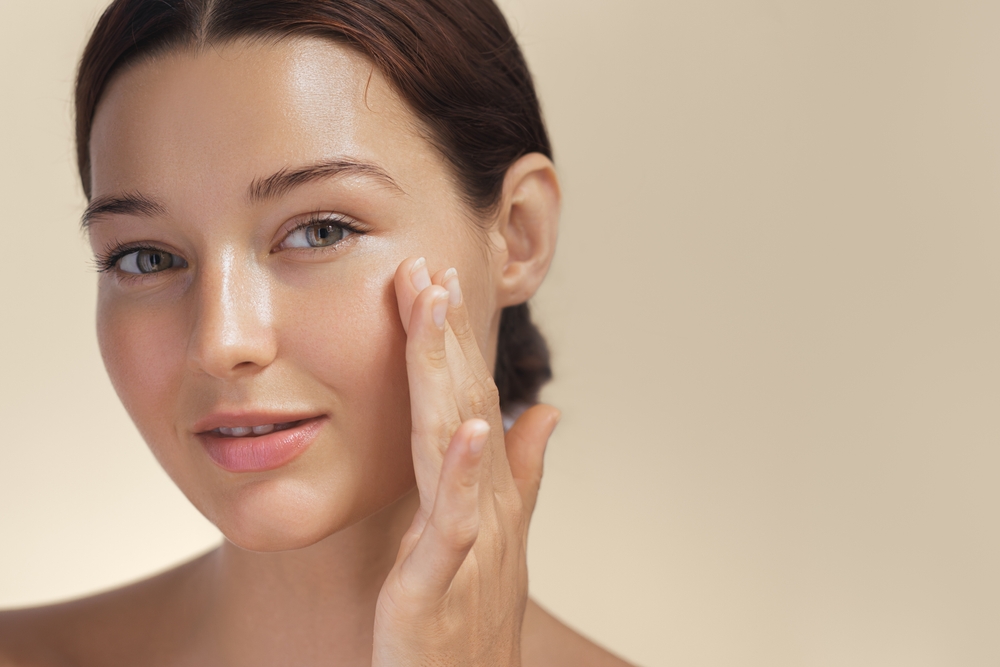The face tells a story, and for many, the forehead becomes the canvas where the earliest chapters of ageing are written. Fine lines slowly evolve into deeper creases, and what once seemed like fleeting expressions begin to settle into the skin. These forehead wrinkles, born from laughter, worry, sun exposure, or time itself, are natural. Yet, it’s equally natural to want to soften them — to restore smoothness without compromising your unique character.
In this guide, we’ll explore how to eliminate forehead wrinkles using a balanced blend of lifestyle changes, skincare options, and professional treatments. From daily habits that help slow their formation to evidence-backed ways to reduce their appearance, you’ll discover how to care for your skin with intention and expertise. No extreme procedures, just intelligent choices and thoughtful solutions.
Can Forehead Wrinkles Really Go Away?
It’s a question many ask as they catch their reflection in the mirror: Are these lines here to stay? The truth is, the skin on your forehead is among the most expressive areas of your face — raised brows, frowns, surprise, and concentration all leave their imprint over time. These repeated movements, combined with natural collagen decline, eventually give rise to wrinkle lines on the forehead.
But whether these lines are permanent depends on their depth and type. Fine lines, often referred to as dynamic wrinkles, form from muscle movement and can often be softened or even reversed with the right treatments and habits. Deeper creases on the forehead, known as static wrinkles, tend to remain even when the face is at rest. These may require more targeted care, such as professional therapies or advanced skincare formulations, to noticeably improve.
While complete erasure isn’t always possible, significant softening is. With consistency and the right approach, it is entirely achievable to refresh the forehead’s appearance, restoring smoothness, bounce, and vitality over time.
5 Everyday Habits That Help You Avoid Forehead Wrinkles
Our skin reflects the life we lead, and our daily routines quietly shape how it ages over time. If you’re hoping to avoid forehead wrinkles or slow their progression, simple yet consistent lifestyle changes can make a visible difference. These five habits are not only skin-friendly but also support your overall well-being.
1. Shield Your Skin from the Sun
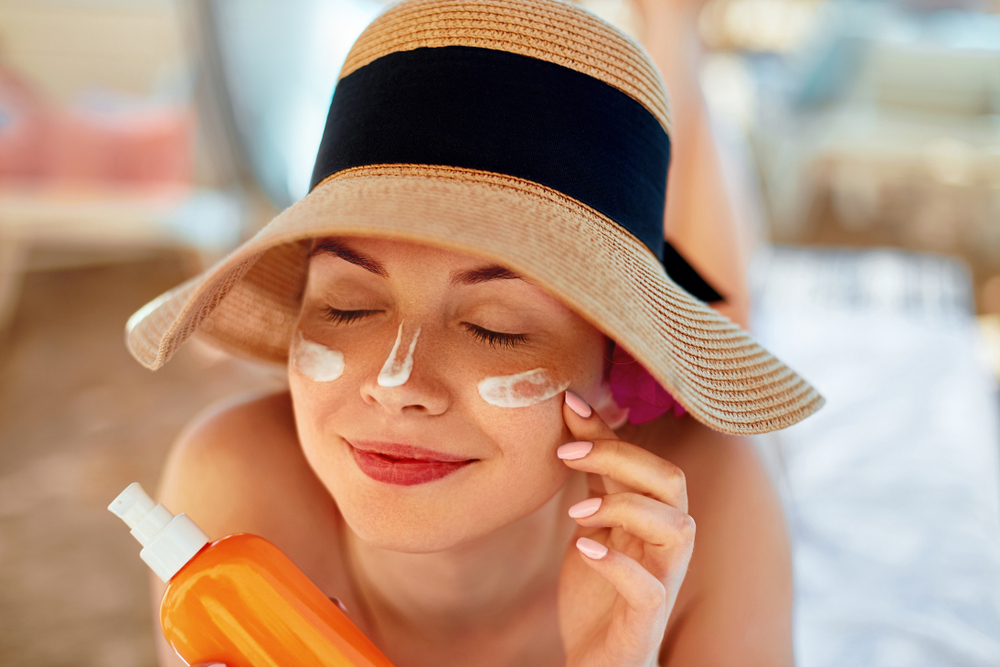
Exposure to ultraviolet rays is one of the fastest ways to accelerate the formation of wrinkle lines on the forehead. Whether it’s a sunny afternoon or a cloudy morning, UV light penetrates the skin and gradually weakens its collagen structure. Wearing SPF 30 or higher every day — even indoors if you’re near windows — is a non-negotiable step in maintaining youthful skin. Wide-brimmed hats and sunglasses also offer extra protection by reducing squinting and brow-furrowing, which contribute to creases on the forehead.
2. Manage Stress and Facial Tension
We often carry tension in our foreheads without realising it, especially when we’re focused, anxious, or deep in thought. These repetitive expressions can carve permanent lines into the skin over time. Practising mindfulness, deep breathing, or incorporating facial relaxation techniques can ease this subconscious strain. Over time, it can help prevent those furrows from settling into more stubborn forehead lines.
3. Keep Your Skin Hydrated
Hydration is fundamental to skin health. Dehydrated skin loses its suppleness and is more prone to wrinkling. Drinking enough water throughout the day, paired with the regular use of a hyaluronic acid moisturiser, helps maintain elasticity and plumpness. When the skin is well-hydrated, forehead creases appear less prominent, and the surface remains smoother and more resilient against environmental stressors.
4. Eat a Skin-Loving Diet
What you eat shows up on your skin. A diet rich in antioxidants — found in colourful fruits, vegetables, nuts, and green tea — helps combat oxidative stress, one of the key contributors to premature ageing. Omega-3 fatty acids, found in oily fish, walnuts, and flaxseeds, nourish the skin barrier and improve texture. Over time, these nutrients support your body’s ability to get rid of forehead wrinkles from the inside out.
5. Ditch the Cigarettes
Smoking depletes oxygen in the skin, breaks down collagen, and restricts circulation — all of which hasten the appearance of wrinkles. It also increases the formation of vertical lines across the forehead and around the mouth due to repeated expressions. If you’re serious about skin health, quitting smoking is one of the most impactful steps you can take. It’s not only a preventative measure for forehead lines, but a gift to your overall health and vitality.
These lifestyle habits may seem small, but their effects compound over time. When paired with the right skincare and professional support, they form a strong foundation for smoother, firmer, and more radiant skin.
How to Eliminate Forehead Wrinkles the Natural Way
For those who prefer a gentle, holistic approach to skincare, there are several natural methods that may help soften the appearance of line marks on the forehead. While these approaches may not offer the instant results of clinical treatments, they contribute to long-term skin health and may visibly improve mild to moderate forehead lines when practised consistently.
Facial Massage and Stimulation
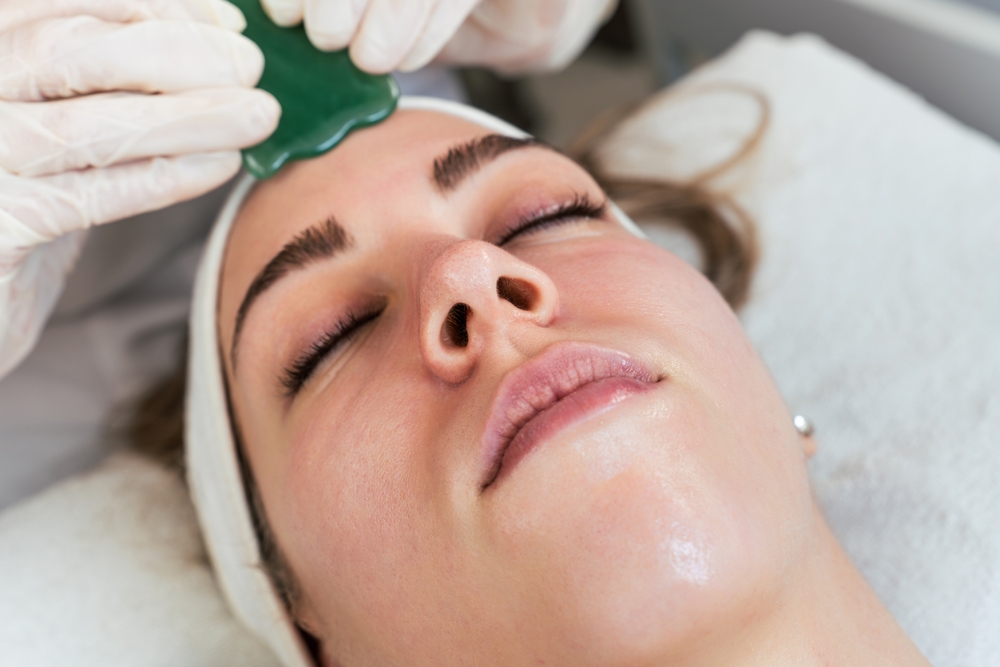
Gentle massage increases circulation, encourages lymphatic drainage, and promotes collagen production. Using your fingertips or a facial tool like a gua sha or jade roller, apply light upward strokes across the forehead. This not only releases muscular tension but may also reduce the prominence of expression lines on the forehead over time. For best results, use a serum rich in antioxidants or peptides during the massage to enhance absorption and nourishment.
Sleep Position and Pillowcare
Believe it or not, the way you sleep can impact your skin’s condition. Pressing your face against the pillow night after night may cause the skin to crease and form permanent lines, particularly across the forehead and cheeks. Switching to a silk or satin pillowcase can minimise friction, and sleeping on your back, though not always easy, can help reduce the risk of developing new forehead creases while you rest.
Natural Ingredients to Try
A handful of natural skincare ingredients have shown promise in supporting skin elasticity and hydration. Aloe vera, for instance, is known for its soothing properties and can temporarily smooth the skin’s surface. Honey, particularly manuka, contains antimicrobial and moisturising benefits. Although these ingredients aren’t miracle cures, they can play a role in your routine when used alongside more targeted treatments such as an anti wrinkle cream formulated with active ingredients.
Relaxation and Mindful Living
Reducing stress doesn’t just benefit your mood — it benefits your face. Cortisol, the stress hormone, can accelerate the breakdown of collagen, making it harder for the skin to maintain its structure. Meditation, yoga, or even a simple walk in nature can help rebalance your system. Over time, a calmer mind may translate into a more relaxed appearance, softening habitual tension that leads to forehead lines.
While trying out how to eliminate forehead wrinkles with natural approaches can support the skin’s overall condition, they work best as part of a broader routine. Combining these rituals with professional advice ensures you’re addressing both the surface and the deeper layers of your skin.
Tried-and-Tested Forehead Lines Treatments
When natural remedies and lifestyle adjustments no longer deliver the results you’re after, it may be time to explore more targeted options. Today’s skincare science offers a broad spectrum of treatments designed to soften, smooth, and rejuvenate the appearance of forehead lines, many of which are accessible, non-invasive, and tailored to suit different skin needs.
1. Retinol and Peptide-Based Anti-Wrinkle Creams
Among the most respected over-the-counter solutions is the use of a high-quality anti wrinkle cream containing retinol, a vitamin A derivative that accelerates cell turnover and boosts collagen synthesis. When combined with peptides, which help strengthen the skin’s structure, these formulations can noticeably improve skin texture and reduce the visibility of wrinkle lines on the forehead. Regular use, especially at night, encourages the skin to renew itself, resulting in a smoother, more even appearance over time.
2. Exfoliation with Glycolic or Lactic Acid
Exfoliating products containing alpha-hydroxy acids (AHAs) like glycolic or lactic acid help slough off dead skin cells and stimulate regeneration. This process reveals fresher skin beneath and can make creases on forehead areas appear softer and less defined. While physical scrubs may feel satisfying, chemical exfoliants tend to be more effective and less abrasive, making them ideal for delicate facial skin. Use them sparingly to avoid over-exfoliation, and always follow with SPF.
3. The Role of Vitamin C in Forehead Creases Treatment
Vitamin C isn’t just a staple for overall health — it’s also a potent ally in skincare. As a powerful antioxidant, it helps neutralise free radicals and stimulates collagen production. Serums containing stabilised vitamin C can brighten the skin, improve tone, and support forehead creases treatment by encouraging the skin to repair itself. It’s best used in the morning, layered under moisturiser and sun protection.
4. Botox vs Non-Invasive Options for Forehead Lines Treatment
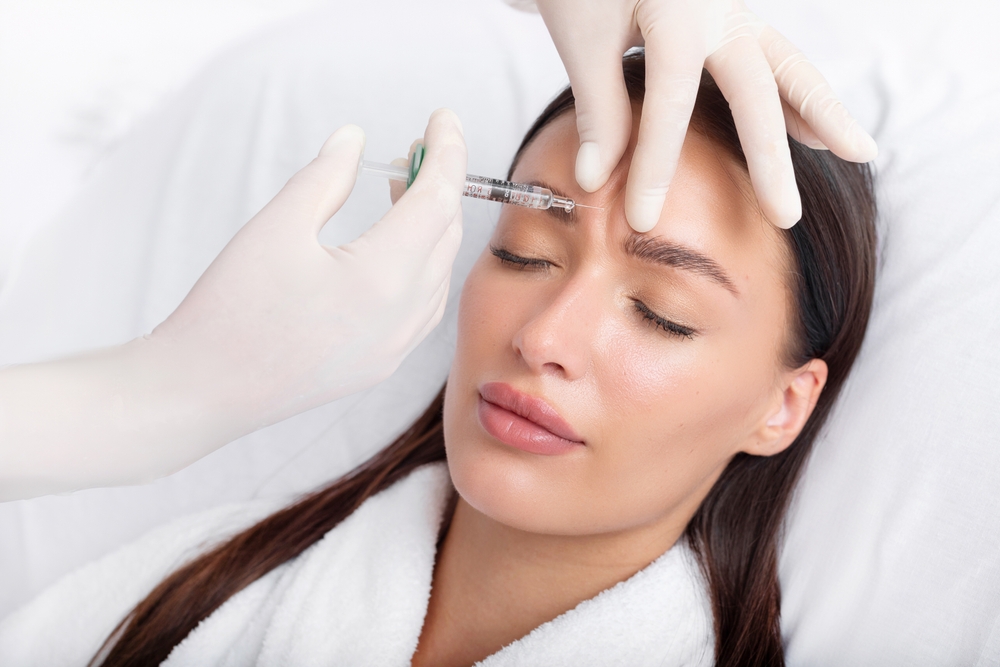
Botox has long been one of the most widely recognised treatments for forehead lines, particularly when those creases begin to settle into deeper grooves. By temporarily relaxing the facial muscles that contribute to repetitive expressions, Botox smooths the surface of the skin and prevents further lines from forming, especially effective for the “11 lines”, those vertical furrows etched between the eyebrows.
Yet, not everyone is comfortable with injectables, and for those seeking a gentler approach, a range of non-invasive options is available. Treatments such as microneedling, fractional laser therapy, and radiofrequency skin tightening work by stimulating collagen production in the dermis, encouraging the skin to rebuild its structure from within. These therapies gradually improve skin texture and firmness without altering muscle movement.
For those targeting the 11 lines without Botox, there are additional methods worth exploring. Peptide-rich serums, for instance, nourish and reinforce the skin’s natural resilience, while facial exercises can help relax habitual tension in the glabella area. Combining these with advanced clinical techniques often delivers the most visible improvements — a tailored approach known as multimodal skincare. It’s this blend of science, technique, and consistency that offers the best chance at smoothing the skin while preserving its natural expression.
The Best Way to Get Rid of Forehead Wrinkles Is a Custom Plan
Forehead wrinkles are a natural part of ageing — a blend of time, expression, and environmental exposure written gently across the skin. Still, with the right approach, they don’t have to be permanent. Understanding how to eliminate forehead wrinkles begins with knowing your skin, recognising the signs early, and adopting a routine that blends care with consistency.
From everyday habits like sun protection and stress management to nourishing skincare and science-led treatments, there’s a world of opportunity to soften wrinkle lines on the forehead and restore the skin’s smoothness. Whether you choose a natural route, advanced formulations, or expert-guided therapies, your skin deserves a solution as unique as you are.
At Lumi Skin Clinics, we understand that real confidence comes from feeling like the best version of yourself. Our tailored consultations and range of non-invasive skin treatments are designed to refresh, rejuvenate, and reveal your natural beauty — gently and effectively. If you’re ready to explore personalised care that respects your individuality, we’re here to help you take the next step.
Disclaimer: The above content is for general informational purposes only and does not constitute medical advice. It is not intended to diagnose, treat, cure, or prevent any condition. Information may change over time. Please consult a qualified healthcare professional before making any health or treatment decisions.

